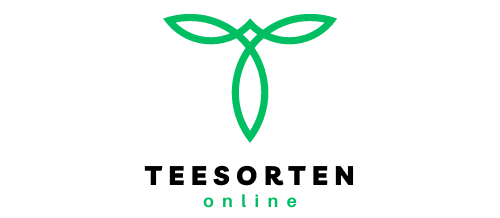What’s the Most Effective Way to Implement Recovery Periods in Swim Training for Optimum Performance?

Swimming is a sport that calls for the utmost physical prowess, a seamless blend of strength, stamina, and speed. Yet, it’s not just about who can swim the fastest or the furthest. It’s also about who can train the most effectively – accounting for intensity, rest, and recovery to maximize performance.
In this article, we’ll delve into the essential role of recovery periods in swim training. Whether you are swimmers, coaches, or perhaps members of a swim team, you’ll learn how to tactically incorporate rest periods, manage lactate buildup, and harness the science behind high-intensity training and recovery for peak swim performance.
En parallèle : How Are Isometric Exercises Being Used to Increase Strength in Rock Climbers?
Understanding the Importance of Recovery in Training
To begin with, let’s understand the significance of recovery in training. When you train, you’re essentially putting your body through stress. This applies to any form of training, from high-intensity sprint sets to long-distance endurance swims. The body responds to this stress by adapting and growing stronger, which is how you improve your performance over time.
However, this stress-recovery-adaptation cycle isn’t instantaneous. It requires time and rest for the body to heal, recover, and adapt. Without adequate recovery, the body cannot fully adapt, which means you won’t see the results you’re expecting. Moreover, the risk of injuries increases, and your overall performance may decline.
A lire également : Can Pre-Competitive Cognitive Routines Enhance Accuracy in Archery?
Incorporating Recovery Periods into Your Swim Workouts
Incorporating recovery periods into swim training requires strategic planning. The most effective way to do this is to intersperse high-intensity sets with periods of rest or low-intensity swimming. The length of recovery time will vary depending on the intensity and duration of the preceding set.
For example, after a high-intensity sprint set, a longer recovery period may be necessary to allow your body to clear the lactate that has built up. Conversely, less recovery time may be needed following a lower intensity, distance swim.
Additionally, it is also beneficial to incorporate full recovery days into your training schedule. These are days where you either do not swim or swim at a very low intensity, giving your body a chance to rest, recover, and adapt to the training you’ve done.
Managing Lactate Buildup for Optimum Performance
One of the key challenges in swim training is the management of lactate buildup. Lactate is a byproduct of anaerobic metabolism, which is when your body produces energy without oxygen. This mainly occurs during high-intensity training.
Accumulated lactate can lead to fatigue, reducing performance. However, adequate recovery periods allow your body to clear lactate more effectively, reducing its negative effects on performance.
There is also evidence to suggest that training at lactate threshold – the intensity at which lactate starts to accumulate faster than it can be cleared – can improve your body’s ability to manage lactate. This, in turn, can enhance your performance in high-intensity, short-duration swims.
The Science Behind High-Intensity Training and Recovery
High-intensity training has been shown to yield substantial improvements in swimming performance. It increases your anaerobic capacity, stimulates muscle growth, and enhances your body’s ability to oxygenate blood.
However, high-intensity training also places significant stress on the body, which is where recovery comes into play. During recovery, your body repairs the muscle damage caused by intense training, replenishes energy stores, and clears out waste products like lactate.
The science behind recovery periods is based on the concept of supercompensation. After a workout, your performance dips as your body recovers. But with adequate rest, it doesn’t just return to baseline; it supercompensates by becoming stronger and fitter than before. This is how swimmers improve their performance over time.
Tailoring Recovery to Individual Swimmers
While there are general guidelines on incorporating recovery into swim training, it’s essential to understand that every swimmer is different. Factors such as age, fitness level, training history, and individual physiological responses to training can all influence recovery needs.
As such, it’s vital for coaches to monitor their swimmers closely, adjusting recovery periods and training loads based on individual responses. This personalized approach can help ensure that each swimmer recovers adequately and experiences optimal improvements in performance.
In conclusion, effective swim training is not just about pushing your limits in the pool. It’s also about understanding and respecting the importance of recovery. By strategically incorporating recovery periods, managing lactate buildup, and tailoring training to individual needs, you can help swimmers achieve their full potential, enhancing performance, and reducing the risk of overtraining or injury.
Incorporating High-Intensity Training and Active Recovery
High-intensity training and active recovery are two pivotal aspects in swim training. It’s a delicate balance that needs to be mastered for optimum performance.
High-intensity training involves swimming at a speed close to your race pace. This form of training helps swimmers to become faster, stronger, and more efficient. On Google Scholar and Pubmed Google, various studies attest to the benefits of high-intensity training for improving a swimmer’s anaerobic capacity, muscle power, and race pace. These training sessions are typically characterized by higher heart rates and increased blood lactate levels.
However, high-intensity training is not sustainable without appropriate recovery periods. Active recovery, as indicated by the term, is not about completely stopping activity. Instead, it’s about reducing the training intensity to a lower level. This could be swimming at a slower pace or doing a different, less strenuous activity like stretching or walking.
Active recovery serves a dual purpose. Firstly, it keeps the blood flowing, which aids in flushing out the lactate produced during high-intensity training. Secondly, it provides a psychological break, allowing swimmers to recuperate mentally from the strain of intense training.
Training programs should ideally incorporate a mix of high-intensity sets, active recovery periods, and full rest days. For instance, a main set could be followed by a few minutes of active recovery before moving on to the next training zone. The length and intensity of the recovery periods would largely depend on the training load and intensity of the main sets.
The Role of Heart Rate and Strength Conditioning in Recovery Periods
Heart rate and strength conditioning are two critical aspects that can significantly influence the effectiveness of recovery periods in swim training.
The heart rate is a useful tool to monitor training intensity and recovery. During high-intensity training, the heart rate increases. However, during recovery, it should gradually decrease back to a baseline level. Using heart rate monitors can help swimmers and coaches to gauge the training intensity and ensure that sufficient recovery is being provided.
Strength conditioning, on the other hand, focuses on building the physical strength necessary to withstand the demands of intense swim training. It includes exercises that target the major muscle groups used in swimming. A well-rounded strength conditioning program can help to improve performance, enhance resilience, and reduce the risk of injuries.
Strength conditioning exercises can also be strategically used during recovery periods. For instance, low-intensity strength exercises could be included on recovery days to promote active recovery. Alternatively, these exercises could be done immediately after high-intensity swim sets, taking advantage of the increased blood flow to aid recovery and muscle growth.
In conclusion, the most effective way to implement recovery periods in swim training for optimum performance is through a calculated blend of high-intensity training, active recovery, heart rate monitoring, and strength conditioning. This personalized approach can help swimmers to recover adequately, maximize their performance, and reduce the risk of overtraining or injury.
